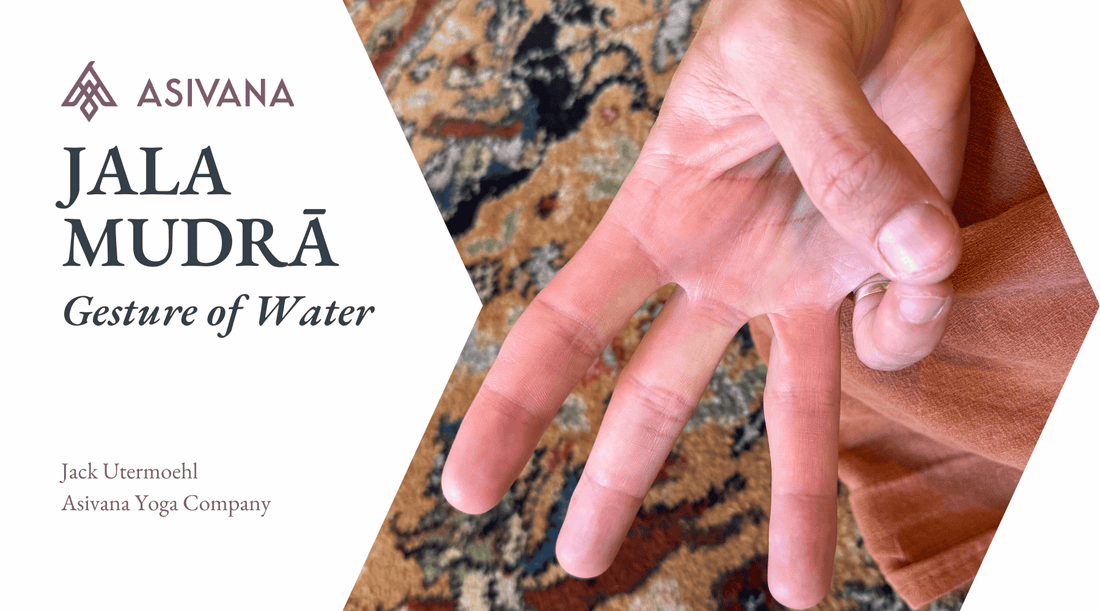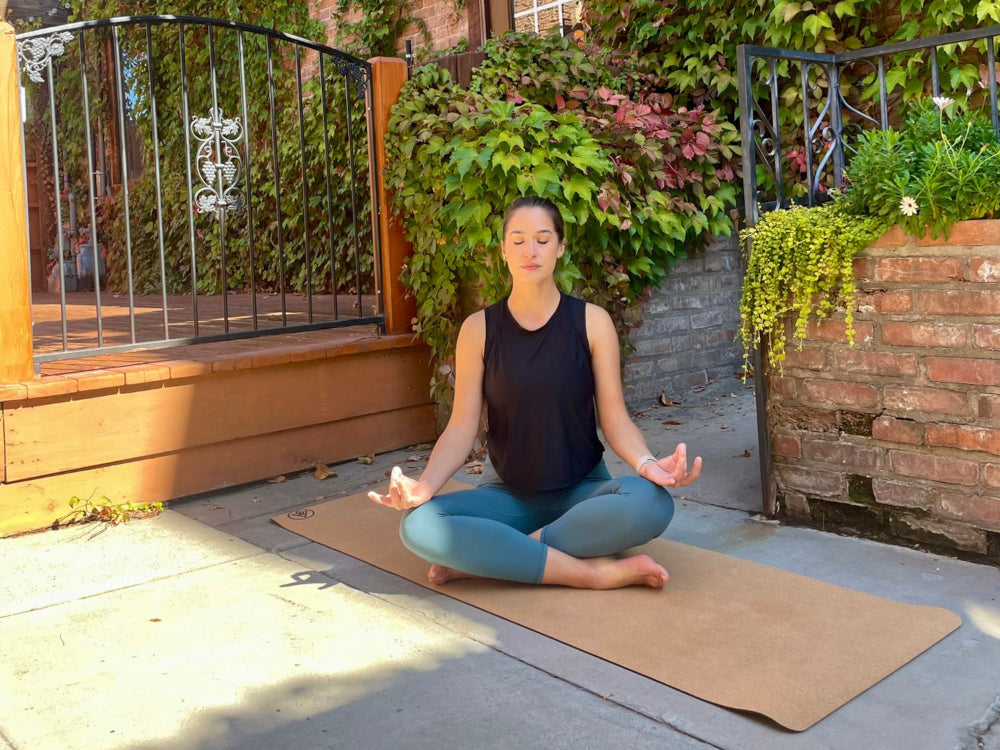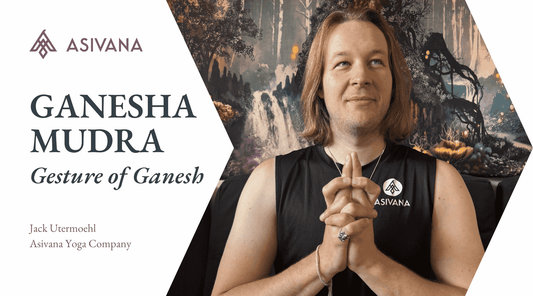
Jala Mudra - Gesture of Water
Jack UtermoehlShare
Jala Mudra (Gesture of Water)
Sanskrit Name: Jala Mudrā - जल मुद्रा
English Translation: Gesture of Water
Phonetic Spelling: JAH-lah Moo-Drah
Jala mudra, the gesture of water, symbolizes the water element within the body, promoting fluidity, balance, and emotional well-being. Water is associated with adaptability, creativity, and flow, and this mudra helps enhance these qualities while restoring inner harmony.
It is beneficial for balancing hydration, supporting urinary and digestive health, and smoothing emotional turbulence. Jala mudra seals water and fire together to create an empowered circuit.
Water is one of the five fundamental elements in Ayurveda and a key aspect of elemental mudras. Jala mudra is especially useful for those who experience dryness in the body or find it difficult to express their emotions freely.

Instructions to Perform Jala Mudra
Sit comfortably in a chair or on the floor, maintaining an upright spine. Take several deep breaths to ground yourself.
Hand Position: Touch the tip of your little finger to the tip of your thumb, forming a circle. The other three fingers remain extended. Rest your hands on your knees or thighs with the palms facing upward.
Posture: Sit in sukhasana (easy pose), alternatively, sit with your feet flat on the ground if seated in a chair.
Breathing Technique: Inhale deeply through the nose, expanding your belly. Exhale slowly, focusing on the calm, fluid nature of the breath.
Duration: Practice jala mudra for a few moments as fluidity and flow are required.
Benefits of Jala Mudra
Jala mudra is known for its ability to balance the water element, aiding emotional balance, creativity, and physical hydration.
Physical Benefits: Helps retain fluid balance in the body, supports urinary health, and promotes hydration.
Mental Benefits: Enhances mental flexibility and creativity while calming an overactive mind.
Emotional Benefits: Encourages emotional fluidity and adaptability.
Spiritual Benefits: Connects the practitioner to the fluid nature of life.
Capture your insights and deepen your connection with our Yoga Journal.Elevate Your Mudra Practice
Symbolism and Meaning of Jala Mudra
Jala (water) symbolizes fluidity, adaptability, and flow in both body and mind. By practicing jala mudra, the practitioner connects with the water element, encouraging a sense of ease and flexibility in both emotional and physical health.
The water element governs the urinary system, as well as emotional states such as compassion and empathy. This mudra creates balance and flow, reminding the practitioner to stay fluid in the face of change and to maintain emotional equilibrium.
When to Practice Jala Mudra
Jala mudra is particularly useful when feeling emotionally rigid or stagnant, or when seeking to balance hydration in the body. It can be practiced during meditation or pranayama.
Incorporate this mudra into your daily practice when you need to enhance emotional flexibility, fluidity in thought, or physical hydration.
A duration of 2 minutes is recommended, but even brief practice can foster a sense of fluidity.
Contraindications for Jala Mudra
Jala mudra is safe for all practitioners. Those with excessive water retention may wish to practice this mudra mindfully or for shorter periods.
Additional Insights on Jala Mudra
Affirmations: "I flow through life with ease and grace." / "I am adaptable, balanced, and calm."
Visualization: While holding jala mudra, visualize a calm, flowing river, representing the fluidity of your emotions. Feel the water wash over any tension or stress, leaving you feeling balanced and at peace.
Associated Chakras: Jala mudra primarily activates Svadhisthana (sacral chakra), evoking creativity, emotional balance, and fluidity.
Paired Asanas: Works well with movement based sequences like moon salutations.
Related Pranayama: Pair jala mudra in your left hand with alternate nostril breathing (nadi shodhana) to enhance emotional fluidity and calmness.
Meditation Techniques: Jala mudra is ideal for mindfulness meditation focused on fluidity and adaptability, as well as meditation practices embracing the full moon.
Variations and Modifications
Alternative Hand Positions: None
Adaptations for Beginners: Beginners may start by holding jala mudra for seated before moving into flowing sequences.
—— 🕉 ——

Personal Insights
Jala mudra is about fluidity, flow, and flexibility. It's a wonderful addition to a vinyasa style yoga class with fluid motions flowing from pose to pose through transitions- jala mudra adds an additional layer of flow and beauty to the practice.
I love to perform jala mudra when my hand comes to a hold or peak such as when raising an arm overhead or extending it toward a side wall. This mudra invites fluidity and watery flow into a yoga practice.
Now my favorite type of yoga class for jala mudra is a full moon yoga sequence.
Let me know your experience in the comments below.












1 comment
thanks for Mudra